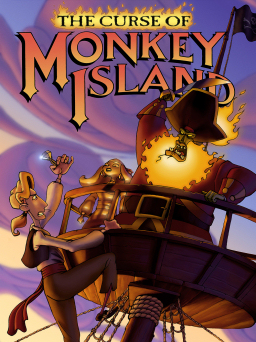
The Curse of Monkey Island is an adventure game developed and published by LucasArts in 1997. A sequel to 1991's Monkey Island 2: LeChuck's Revenge, it is the third game in the Monkey Island series.
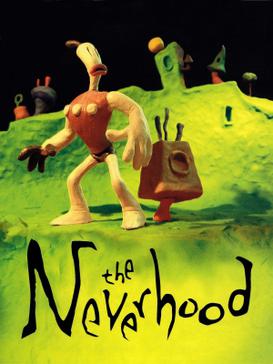
The Neverhood is a 1996 point-and-click adventure video game developed by The Neverhood, Inc. and published by DreamWorks Interactive for Microsoft Windows. The game follows the adventure of a claymation character named Klaymen as he discovers his origins and his purpose in a world made entirely out of clay. When the game was originally released, it was unique in that all of its animation was done entirely in claymation, including all of the sets, rather than 2- or 3-dimensional computer graphics, like many other games at its time. The gameplay consists mostly of the player guiding the main character Klaymen around and solving puzzles to advance in the game. As the player advances through different areas of the game, there are various video sequences that help advance the plot. In addition to being unique, The Neverhood aimed at being quirky and humorous, as is evident by the characters, the music, and the plot sequence of the game. This game was targeted for ages 17 and up.
Creatures is an artificial life video game series, created in the mid-1990s by English computer scientist Steve Grand whilst working for the Cambridge video games developer Millennium Interactive.
Legend Entertainment Company was an American developer and publisher of computer games, best known for creating adventure titles throughout the 1990s. The company was founded by Bob Bates and Mike Verdu, both veterans of the interactive fiction studio Infocom that shut down in 1989. Legend's first two games, Spellcasting 101: Sorcerers Get All the Girls and Timequest, had strong sales that sustained the company. Legend also profited from negotiating licenses to popular book series, allowing them to create notable game adaptations such as Companions of Xanth and Gateway. Legend also earned a reputation for comedic adventures, with numerous awards for Eric the Unready in 1993. As the technology of the game industry changed, Legend continued to expand its game engine to take advantage of higher graphical fidelity, mouse support, and the increased media storage of the compact disc.

Titanic: Adventure Out of Time is a 1996 point-and-click adventure game developed by CyberFlix and published in the United States and United Kingdom by GTE Entertainment and Europress respectively, for Microsoft Windows and Macintosh. It takes place in a virtual representation of the RMS Titanic, with the player assuming the role of a British spy who has been sent back in time to the final night of the Titanic and must complete a previously failed mission to prevent World War I, the Russian Revolution, and World War II from occurring. The gameplay involves exploring the ship and solving puzzles. There are multiple outcomes and endings to the game depending on the player's interactions with characters and use of items.
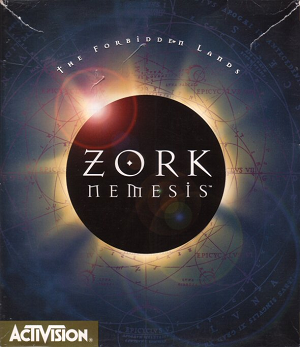
Zork Nemesis: The Forbidden Lands is a graphic adventure game developed by Zombie LLC, published by Activision, and released in 1996 for Windows 95, MS-DOS, and Macintosh. It is the eleventh game in the Zork series, and the first title not to be marketed under the Infocom label, while featuring a darker, less comical story within the Zork setting. The story focuses on players investigating the sudden disappearance of four prominent figures and their children to the hands of a mysterious being known as the "Nemesis", and uncovering a sinister plot during their investigations that they must thwart. The game features performances by Lauren Koslow, W. Morgan Sheppard, Allan Kolman, Stephen Macht, Paul Anthony Stewart, Merle Kennedy, and Bruce Nozick.
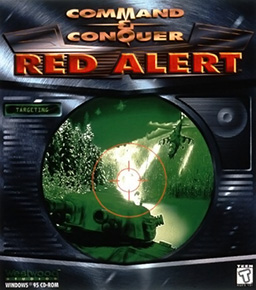
Command & Conquer: Red Alert is a real-time strategy video game in the Command & Conquer franchise, produced by Westwood Studios and released by Virgin Interactive Entertainment in 1996. The second game to bear the Command & Conquer title, Red Alert is the prequel to the original Command & Conquer of 1995, and takes place in the alternate early history of Command & Conquer when Allied Forces battle an aggressive Soviet Union for control over the European mainland.

Heroes of Might and Magic: A Strategic Quest is a turn-based strategy game developed and published by New World Computing in 1995 for DOS. A spin-off of New World Computing's Might and Magic series of role-playing video games, the success of Heroes of Might and Magic led to a number of sequels.

Spycraft is a d20 and OGL-based role-playing game dealing with superspies and modern action. Originally published by the Alderac Entertainment Group (AEG), it is currently published under licence by Crafty Games.

Rama is a first-person adventure game developed and published by Sierra On-Line in 1996. The game is based on Arthur C. Clarke's books Rendezvous with Rama (1973) and Rama II (1989) and supports both DOS and Microsoft Windows. In 1998, a PlayStation version was released in Japan. It is the second Rama game to be produced. The interactive fiction game Rendezvous with Rama was released in 1984 by Telarium.

The Elder Scrolls II: Daggerfall is an open-world, action role-playing game published by Bethesda Softworks. The second video game in the Elder Scrolls series, it was released on September 20, 1996, for MS-DOS, following the success of 1994's The Elder Scrolls: Arena. The story follows the player, sent by the Emperor, to free the ghost of King Lysandus from his earthly shackles and discover what happened to a letter sent from the Emperor to the former queen of Daggerfall.
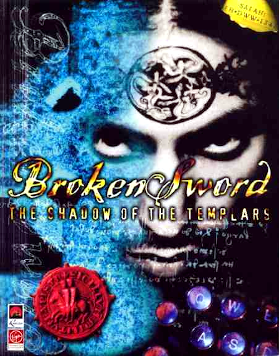
Broken Sword: The Shadow of the Templars is a 1996 point-and-click adventure game, and the first in the Broken Sword series, co-written and directed by Charles Cecil, and developed by Revolution Software. The player assumes the role of George Stobbart, an American tourist in Paris, as he attempts to unravel a deep conspiracy involving a sinister cult and a hidden treasure, seeing him travel to various locations around Europe and the Middle East. The game's storyline was conceived to feature a serious tone and heavily influenced by research on Knights Templar by Cecil, but was also interlaced with humor and graphics in the style of classic animated films.
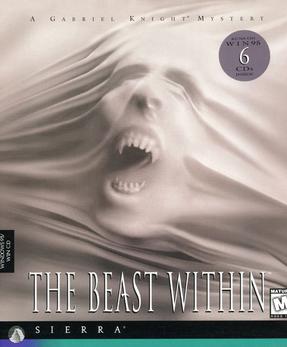
The Beast Within: A Gabriel Knight Mystery is an interactive movie point-and-click adventure game, developed and published by Sierra On-Line for MS-DOS, Macintosh, and Microsoft Windows, and released in 1995. The live-action scenes star the talents of Dean Erickson and Joanne Takahashi in the game's lead roles. The sequel to 1993's Gabriel Knight: Sins of the Fathers and the second entry in the Gabriel Knight series, the game focuses on the lives of Gabriel Knight, an author who is descended from a family that combats supernatural evils, and Grace Nakimura, a student who assists Gabriel, as they become involved in a new case within Germany that focuses around a werewolf that has begun killing people around the city of Munich, and has connections to the lives of two famous people of Germany's history.

IndyCar Racing is a racing video game by Papyrus Design Group released in 1993. Papyrus, consisting of David Kaemmer and Omar Khudari, previously developed Indianapolis 500: The Simulation, released in 1989.
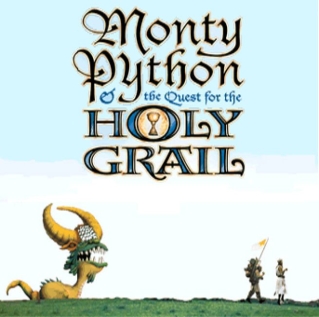
Monty Python & the Quest for the Holy Grail is an adventure game created by 7th Level in 1996 for Windows. The game is based on the 1975 film Monty Python and the Holy Grail and was the second of three Monty Python games created by 7th Level.
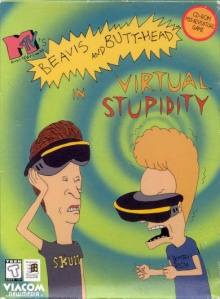
Beavis and Butt-Head in Virtual Stupidity is a point-and-click adventure computer game based on the American animated television series created by Mike Judge, Beavis and Butt-Head, that was developed by ICOM Simulations and published by Viacom New Media. It was released on August 31, 1995.

Warcraft II: Tides of Darkness is a fantasy real-time strategy computer game developed by Blizzard Entertainment and released for DOS in 1995 and Mac OS in 1996 by Blizzard's parent, Davidson & Associates. A sequel to Warcraft: Orcs & Humans, the game was met with positive reviews and won most of the major PC gaming awards in 1996. In 1996, Blizzard released an expansion pack, Warcraft II: Beyond the Dark Portal, for DOS and Mac OS, and a compilation, Warcraft II: The Dark Saga, for the PlayStation and Sega Saturn. The Battle.net edition, released in 1999, included Warcraft II: Beyond the Dark Portal, provided Blizzard's online gaming service, and replaced the MS-DOS version with a Windows one.
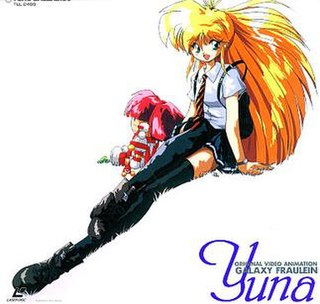
Galaxy Fräulein Yuna is a Japanese media franchise created by Mika Akitaka. The Japanese title literally translates to "Galaxy Lady Legend Yuna", "Fraulein" refers to the German word "Fräulein" standing for "Miss".

Star Wars: Pit Droids is a puzzle game developed and published by Lucas Learning. It was originally released for Microsoft Windows and Macintosh on September 13, 1999. It was later ported to iOS and released on February 9, 2012. The game develops skills such as hypothesis testing and geometry.

Santa Fe Mysteries: The Elk Moon Murder is a video game, the first in the Santa Fe Mysteries series, followed by Santa Fe Mysteries: Sacred Ground. In The Elk Moon Murder, a famous Native American artist named Anna Elk Moon is murdered in the American Southwest.



















